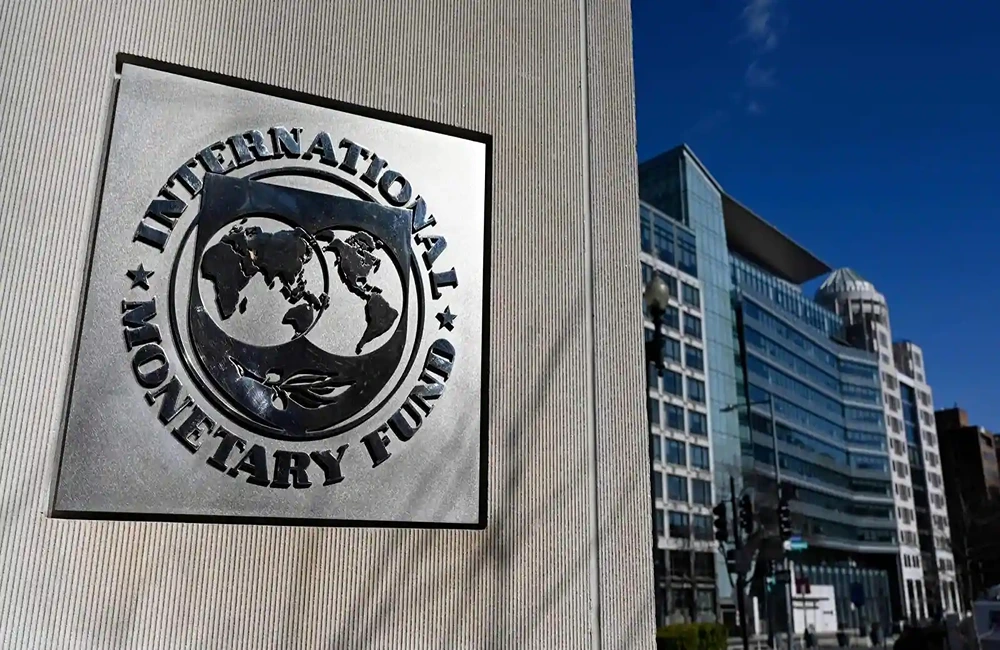In its flagship World Economic Outlook, the International Monetary Fund (IMF) predicted that India would be the world’s fastest-growing economy despite financial sector turmoil, high inflation, the ongoing effects of the Russia-Ukraine war, and three years of COVID.
The IMF cut its growth forecast for 2023-24 to 5.9 percent from 6.1 percent previously, but India remains the world’s fastest-growing economy, according to World Economic Outlook figures released on Tuesday. According to the IMF, India’s inflation will fall to 4.9 percent this fiscal year and then to 4.4 percent the following fiscal year.
The IMF’s growth forecast is lower than the Reserve Bank of India’s (RBI’s). The central bank forecasted 7% GDP growth in FY 2022-23 and 6.4% in the current fiscal year, which began on April 1.
The government has yet to publish full-year GDP figures for 2022-23.
Meanwhile, the international lender expressed concerns about inflation, debt, and the financial sector’s exposure to rising interest rates. It warned that if banks continue to cut lending, global output will fall by another 0.3 percentage point in 2023.
“Despite the fillips from lower food and energy prices and improved supply-chain functioning, risks are firm to the downside with the increased uncertainty from the recent financial sector turmoil,” the report said.
The IMF projects growth to bottom out at 2.8 percent in 2023, picking up to 3 percent in 2024. Inflation is expected to stay elevated at 7 percent for the rest of the year, before declining to 4.9 percent next year.
Supply-chain disruptions and rising geopolitical tensions have brought the risks and potential benefits and costs of geoeconomic fragmentation to the center of the policy debate, added the report.
Foreign direct investment (FDI) is increasingly concentrated among geopolitically aligned countries, particularly in strategic sectors.
Given their reliance on FDI from geopolitically distant countries, several emerging market and developing economies are extremely vulnerable to FDI relocation.
Long-term FDI fragmentation caused by the emergence of geopolitical blocs can result in large output losses, particularly for emerging market and developing economies, according to the report.
Tentative signs in early 2023 that the global economy could achieve a soft landing, with inflation falling and growth remaining stable, have faded amid persistently high inflation and recent financial sector turmoil.
Although inflation has fallen as central banks have raised interest rates and food and energy prices have fallen, underlying price pressures remain sticky in a number of economies, with labour markets tight in many.
The banking sector’s vulnerabilities have come to light, and fears of contagion have grown across the broader financial sector, including nonbank financial institutions, as a result of the rapid rise in policy rates.
The risks to the outlook are heavily skewed to the downside, with the likelihood of a hard landing increasing sharply, according to the report.
Public debt as a percentage of GDP increased globally during COVID-19 and is expected to remain elevated, posing a growing challenge for policymakers, particularly as global real interest rates rise.
China’s growth rate is expected to be 5.2 percent in 2023 and 4.5 percent in 2024, up from three percent in 2022.
The United States is expected to grow by 1.6% in 2023, France by 0.7%, and Germany and the United Kingdom by -0.1% and -0.7%, respectively. Despite the lingering COVID pandemic and tightening financing conditions as the Russia-Ukraine war continues, most countries will avoid recession in 2023.

















